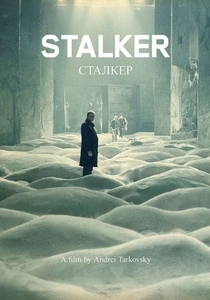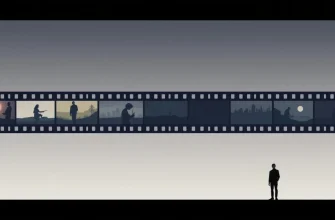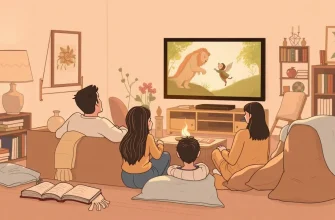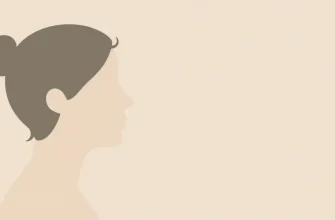Soviet cinema, often associated with propaganda and realism, also ventured into the realm of surrealism, creating films that defy conventional storytelling. This curated list of 10 Soviet films showcases the unique blend of surrealism, allegory, and dreamlike sequences, offering a fascinating glimpse into the Soviet Union's exploration of the subconscious and the bizarre. Each film in this collection has been selected for its ability to transport viewers to a world where reality bends and imagination reigns supreme, all now accessible with English dubbing or subtitles.

Solaris (1972)
Description: Another Tarkovsky gem, "Solaris" explores the psychological effects of space travel, with the planet Solaris manifesting the crew's deepest desires and fears in surreal, tangible forms.
Fact: The film was remade in Hollywood in 2002, but Tarkovsky's version remains the more celebrated for its philosophical depth.
 Watch Now
Watch Now 
Stalker (1979)
Description: Andrei Tarkovsky's masterpiece delves into metaphysical and philosophical themes, using a mysterious zone where wishes come true as a backdrop for a surreal journey. Its slow pace and dreamlike sequences create an atmosphere of otherworldly contemplation.
Fact: The film was shot in Estonia, and the set was so convincing that locals believed it was a real nuclear disaster site.
 Watch Now
Watch Now 
The Color of Pomegranates (1969)
Description: This visually stunning film by Sergei Parajanov explores the life of the 18th-century Armenian poet Sayat-Nova through a series of dreamlike, symbolic tableaux. Its surreal imagery and non-linear narrative make it a quintessential piece of Soviet surrealism.
Fact: Parajanov was imprisoned for his work, which was seen as subversive by Soviet authorities. The film was heavily edited and censored before its release.
 30 Days Free
30 Days Free 
The Mirror (1975)
Description: Tarkovsky's deeply personal film blends autobiographical elements with surreal imagery, exploring memory, time, and the human condition through a non-linear narrative that blurs the line between reality and dream.
Fact: The film was initially banned by Soviet censors for its perceived lack of political content.
 30 Days Free
30 Days Free 
The Ascent (1977)
Description: Larisa Shepitko's film uses stark, surreal imagery to depict the harrowing journey of two Soviet partisans during WWII, blending realism with symbolic, dreamlike sequences that explore themes of sacrifice and redemption.
Fact: Shepitko died in a car accident shortly after the film's release, leaving behind a legacy of powerful, surreal cinema.
 30 Days Free
30 Days Free 
The House on Trubnaya (1928)
Description: This silent comedy by Boris Barnet uses surreal humor and visual gags to tell the story of a young woman's adventures in Moscow, showcasing the city's transformation through a whimsical lens.
Fact: The film was one of the first Soviet comedies to gain international recognition for its innovative use of montage and surreal elements.
 30 Days Free
30 Days Free 
The Overcoat (1926)
Description: Based on Gogol's short story, this film by Grigori Kozintsev and Leonid Trauberg uses expressionistic techniques to bring to life the surreal, tragic tale of a poor clerk and his obsession with a new overcoat.
Fact: The film was considered lost for many years but was rediscovered in the 1980s.
 30 Days Free
30 Days Free 
The Passions of Anna (1973)
Description: Directed by Alexander Sokurov, this film uses a surreal narrative to explore the life of Anna, a woman whose existence is marked by a series of bizarre, dreamlike events, reflecting on themes of identity and existentialism.
Fact: Sokurov's early work, this film was part of his exploration into the surreal and the psychological.
 30 Days Free
30 Days Free 
The Fall of Otrar (1991)
Description: This historical epic by Ardak Amirkulov uses surreal elements to depict the fall of the city of Otrar, blending myth, history, and dreamlike sequences to create a unique narrative experience.
Fact: The film was one of the last major Soviet productions before the dissolution of the USSR.
 30 Days Free
30 Days Free 
The Light Thief (2010)
Description: While not strictly Soviet, this Kyrgyz film by Aktan Arym Kubat uses surreal imagery to tell the story of a village electrician who becomes a light thief, exploring themes of power, corruption, and the surreal nature of everyday life.
Fact: The film was Kyrgyzstan's submission for the Best Foreign Language Film at the 83rd Academy Awards.
 30 Days Free
30 Days Free 








